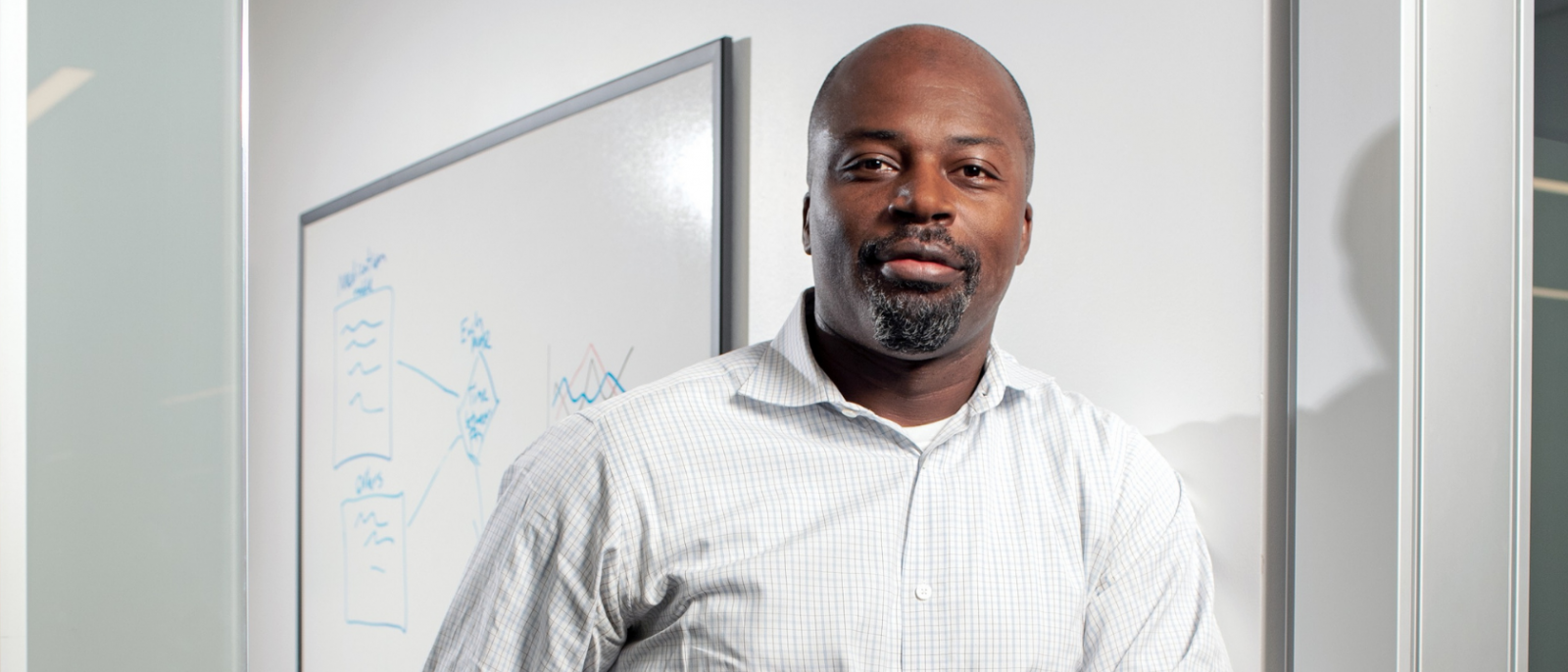Nurse Innovator Spotlight: Kenrick Cato
After a decade in the Army, Kenrick Cato, PhD, RN, CPHIMS, FAAN, was thinking about his next move. One simple question from his friend, a nurse practitioner, changed the trajectory of his future. “She asked, ‘have you ever considered being a nurse instead of a physician?’”
 In this Nurse Innovator Spotlight, Dr. Kenrick Cato, Professor of Informatics at the Children’s Hospital of Philadelphia, talks about informatics, the future of nursing, and a groundbreaking tool that harnesses nurses’ expertise and knowledge at the bedside.
In this Nurse Innovator Spotlight, Dr. Kenrick Cato, Professor of Informatics at the Children’s Hospital of Philadelphia, talks about informatics, the future of nursing, and a groundbreaking tool that harnesses nurses’ expertise and knowledge at the bedside.
Kenrick’s family immigrated to the United States from Guyana, a country in South America, where his mother worked as a nurse. However, Kenrick says it never occurred to him to pursue nursing. “In many immigrant families, there’s always this drive to be better—so, it was like I should become a doctor. But when I sat down and thought about what nurses do and their hands-on role—I wanted that.”
The choice between becoming a physician or nurse was rooted in his love for health care, shaped by his mother’s career. In the 80s, Kenrick says, his mother worked in one of the only hospitals caring for patients with HIV during the height of the AIDS epidemic. “That left a profound impact on me. So many nurses, my mother included, were helping people in this crisis where many patients felt alone and abandoned.”
With his mother’s career as an example, Kenrick had the answer to his friend’s question. About a year after being in combat, Kenrick went into nursing school—obtaining his PhD in nursing with a concentration in clinical informatics. His role allows him to use data to improve how clinicians work, quality of care, and patient safety. And while he researches all clinicians, he says it’s difficult not to focus on nursing data specifically. “There’s a lot of nursing expertise buried in the data I look at,” Kenrick said. “I’m very passionate about surfacing that information and showing the world the value of nursing work and judgment.”
He’s doing just that. In 2012, his nursing school colleague Sarah Collins Rossetti, PhD, BSN, RN, FAAN, FAMIA, FACMI, tapped him to help work on what would eventually become CONCERN (Communicating Narrative Concerns Entered by RNs), a tool that can predict early signs of deterioration in hospitalized patients. Unlike similar tools that rely on patient characteristics, CONCERN takes a different approach—it looks at why nurses are concerned about a patient’s health.
CONCERN analyzes nurses’ notes within patients’ electronic health records and how frequently nurses make those notes so care teams can save patients sooner. With funding from the American Nurses Foundation’s Reimagining Nursing Initiative, the team’s project CONCERN Implementation Toolkit is partnering with three major health systems to learn what health care settings across the country need to adopt CONCERN.
The team will examine how the toolkit’s implementation varies based on factors like geographical location, clinical policies and different systemic structures. “We also know that there are ethnic and racial biases in clinical workflows. So, it’s really important we learn how that will affect CONCERN’s performance.” The goal is to adjust the tool based on those learning so it can work optimally for all patients.
Artificial intelligence and technology in health care can be concerning for health professionals. One fear is that tools like CONCERN will replace nurses. But Kenrick says that is not the case. “When you think about the health care setting, it’s the nurse who is at the bedside. A lot of what nurses do requires physical touch, but it’s not always touching. It’s eye contact. It’s looking at patients, observing their families and thinking about what they might need. Nurses’ role is so integral to health care—they can never be replaced by machines.”